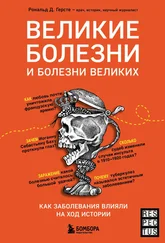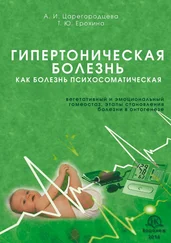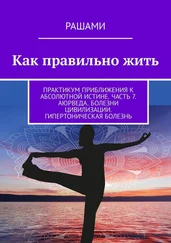Lee I.M., Rexrode K.M., Cook N.R., Manson J.E., Buring J.E. Physical activity and coronary heart disease in women: is “no pain, no gain” passe? JAMA. 2001; 285 (11): 1447–1454.
Lee D.C., Pate R.R., Lavie C.J., et al. Leisure-time running reduces all-cause and cardiovascular mortality risk. J. Am. Coll. Cardiol. 2014 Aug. 5; 64 (5): 472–481. doi: 10.1016/j.jacc.2014.04.058.
Lee D.C., Brellenthin A.G., Thompson P.D., et al. Running as a key lifestyle medicine for longevity. Prog. Cardiovasc. Dis. 2017 Jun – Jul; 60 (1): 45–55. doi: 10.1016/j.pcad.2017.03.005. Epub. 2017 Mar. 30.
Hardesty P. Is high intensity interval exercise safe for heart patients? https://www.ornish.com/zine/is-high-intensity-interval-exercise-safe-for-a-person-with-cardiovascular-disease.
Tucker L.A., et al. Physical activity and telomere length in U.S. men and women: an NHANES investigation. Prev. Medicine. 2017; 100: 145. doi: 10.1016/j.ypmed.2017.04.027.
Duggal N.A., Pollock R.D., Lazarus N.R., et al. Major features of immunesenescence, including reduced thymic output, are ameliorated by high levels of physical activity in adulthood. Aging. Cell. 2018 Apr.; 17 (2). doi: 10.1111/acel.12750. Epub 2018 Mar 8.
Puterman E., Lin J., Blackburn E., O’Donovan A., Adler N., Epel E. The power of exercise: buffering the effect of chronic stress on telomere length. PLoS ONE. 2010; 5 (5).
Puterman E., et al. Aerobic exercise lengthens telomeres and reduces stress in family caregivers: a randomized controlled trial. Psychoneuroendocrinology, in press, 2018.
Beate I., et al. Telomere length and long-term endurance exercise: does exercise training affect biological age? A pilot study. PLoS ONE. 2012; 7 (12).
Cherkas L.F., et al. The association between physical activity in leisure time and leukocyte telomere length. Arch. Int. Med. 2008; 168 (2).
Zhang Z., Chen W. A systematic review of the relationship between physical activity and happiness. J. Happiness Stud. 2018. https://doi.org/10.1007/s10902-018-9976-0.
Schuch F.B., Vancampfort D., Sui X., et al. Are lower levels of cardiorespiratory fitness associated with incident depression? A systematic review of prospective cohort studies. Prev. Med. 2016 Dec.; 93: 159–165. doi: 10.1016/j.ypmed.2016.10.011. Epub 2016 Oct 17.
Schuch F.B., Vancampfort D., Richards J., et al. Exercise as a treatment for depression: a meta-analysis adjusting for publication bias. J. Psychiatr. Res. 2016 Jun.; 77: 42–51. doi: 10.1016/j.jpsychires.2016.02.023. Epub 2016 Mar. 4.
Schuch F.B., Deslandes A.C., Stubbs B., et al. Neurobiological effects of exercise on major depressive disorder: a systematic review. Neurosci. Biobehav. Rev. 2016 Feb.; 61: 1–11. doi: 10.1016/j.neubiorev.2015.11.012. Epub. 2015 Dec. 2.
Reynolds G. Weight training may help to ease or prevent depression. New York Times. 2018 Jun. 6.
Gordon B.R., McDowell C.P., Hallgren M., et al. Association of efficacy of resistance exercise training with depressive symptoms. JAMA Psychiatry. 2018; 75 (6): 566–576. doi: 10.1001/jamapsychiatry.2018.0572.
Van Praag H. Exercise and the brain: something to chew on. Trends Neurosci. 2009 May; 32 (5): 283–290.
Sibley B.A., Etnier J.L. The relationship between physical activity and cognition in children: a metaanalysis. Pediatric Exercise Science. 2003; 15: 243–256.
Pereira A.C., Huddleston D.E., Brickman A.M., et al. An in vivo correlate of exerciseinduced neurogenesis in the adult dentate gyrus. Proc. Natl. Acad. Sci. U.S.A. 2007 Mar. 27; 104 (13): 5638–5643.
Dik M., Deeg D.J., Visser M., Jonker C. Early life physical activity and cognition at old age. J. Clin. Exp. Neuropsychol. 2003 Aug.; 25 (5): 643–653.
Kramer A.F., Hahn S., Cohen N.J., et al. Ageing, fitness and neurocognitive function. Nature. 1999 Jul. 29; 400 (6743): 418–419.
Reynolds G. How exercise can help you recall words. New York Times. 2018 May 15.
He C., Sumpter R. Jr., Levine B. Exercise induces autophagy in peripheral tissues and in the brain. Autophagy. 2012 Oct.; 8 (10): 1548–1551. doi: 10.4161/auto.21327. Epub. 2012 Aug. 15; Reynolds G. Exercise as housecleaning for the body. New York Times. 2012 Feb. 1.
Benito E., Kerimoglu C., Ramachandran B., et al. RNA-dependent intergenerational inheritance of enhanced synaptic plasticity after environmental enrichment. Cell. Rep. 2018 Apr. 10; 23 (2): 546–554. doi: 10.1016/j.celrep.2018.03.059.
Эпигенетика (приставка «эпи-» означает «над чем-то», то есть над-генетика) – наука, изучающая процессы наследования изменений экспрессии генов и фенотипа клетки, не затрагивающие изменения ДНК. Прим. науч. ред.
Rosenbaum D., Mama Y., Algom D. Stand by your stroop: standing up enhances selective attention and cognitive control. Psychological. Science. 2017; 28: 1864.
Erickson K.I., Voss M.W., Prakash R.S., et al. Exercise training increases size of hippocampus and improves memory. Proc. Natl. Acad. Sci. U.S.A. 2011 Feb. 15; 108 (7): 3017–3022. doi: 10.1073/pnas.1015950108. Epub 2011 Jan 31.
Erickson K.I., Voss M.W., Prakash R.S., et al. Exercise training increases size of hippocampus and improves memory. Proc. Natl. Acad. Sci. U.S.A. 2011 Feb. 15; 108 (7): 3017–3022. doi: 10.1073/pnas.1015950108. Epub 2011 Jan 31.
Baker L.D., Craf S., Jung Y., Whitlow C.T. Aerobic exercise preserves brain volume and improves cognitive function. Presented at Radiological Society of North America annual scientific sessions. 2016 Nov. 30. https://press.rsna.org/timssnet/media/pressreleases/14_pr_target.cfm?ID=1921.
Colcombe S.J., Erickson K., Scalf P.E., Kim J.S., et al. Aerobic exercise training increases brain volume in aging humans. J. Gerontol. A. Biol. Sci Med. Sci. 2006 Nov.; 61 (11): 1166–1170.
Miller R.M., Marriott D., Trotter J., et al. Running exercise mitigates the negative consequences of chronic stress on dorsal hippocampal long-term potentiation in male mice. Neurobiol. Learn. Mem. 2018 Mar.; 149: 28–38. doi: 10.1016/j.nlm.2018.01.008. Epub. 2018 Feb. 9.
Flatow I. Growing a bigger brain is a walk in the park. Talk of the Nation. National. Public. Radio. 2011 Feb. 4.
Carmichael M. Can exercise make you smarter? Newsweek. 2007 Mar. 26.
Editor. Focus on stress. Nature Neuroscience. 2015; 18: 1343.
Sorrells S.F., Caso J.R., Munhoz C.D., Sapolsky R.M. The stressed C.N.S. Neuron. 2009 Oct. 15; 64 (1): 33–39. doi: 10.1016/j.neuron.2009.09.032.
Читать дальше
Конец ознакомительного отрывка
Купить книгу










